The Thermal Data
A total of 6 tests were conducted at 1.0 GPM with fan speeds of 750 rpm, 1300 rpm and 1850 rpm being run in ‘Push Only’ and ‘Push/Pull’. All inclusive this testing takes between 40 – 50 hours of logging time (plus processing the data) to get the results that are presented.
Below is the final data results gathered from at least 5 data logging runs at the flow rate and fan rpm combination. The most stable 15 minute period from each logging run was used and then averaged with the other runs to obtain the data for the table below. A total of 16 temperature sensors are used in the thermal test chamber (8 air in, 2 air out, 3 water in, 3 water out). Each sensor takes a reading every second and is logged via a CrystalFontz unit.
The data in the table below is the averaged results of the logging runs which has then been used to create all the plots and tables there-after.
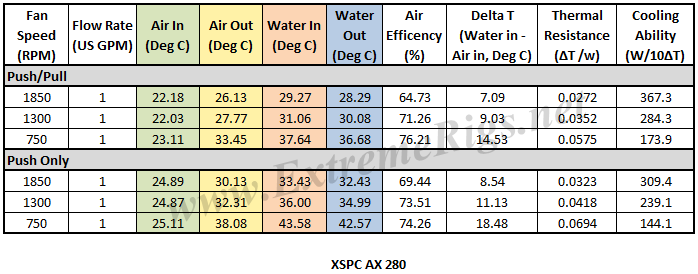 The performance metric of critical importance is the delta between the warm coolant temperature in and the cool ambient air temperature going into the radiator. Given that the system is well insulated and in equilibrium and we know the heat input to the system then we can also calculate a very important number. That number is the amount of power required to raise the coolant temperature by set amount. That amount is typically 1C or 10C. The latter is a more useful reference point.
The performance metric of critical importance is the delta between the warm coolant temperature in and the cool ambient air temperature going into the radiator. Given that the system is well insulated and in equilibrium and we know the heat input to the system then we can also calculate a very important number. That number is the amount of power required to raise the coolant temperature by set amount. That amount is typically 1C or 10C. The latter is a more useful reference point.
Let’s take a look at the Delta T results from the tests. Note that the extrapolation of the curve is much more sensitive to error than in the tested range.
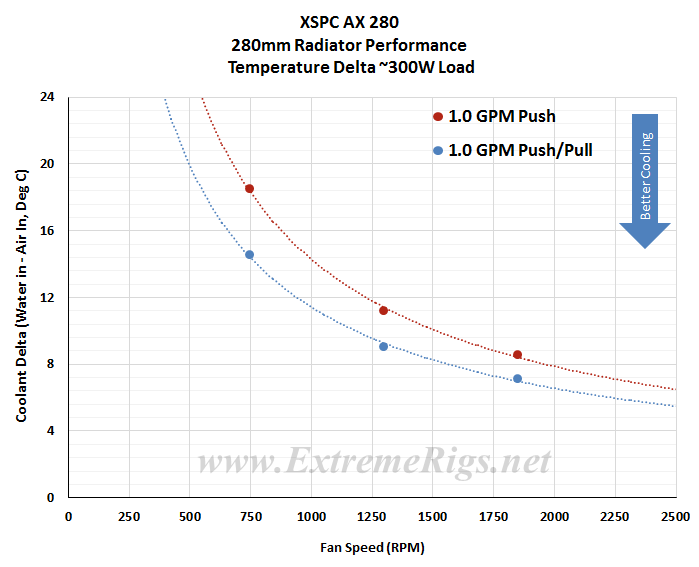 I was not too concerned about the actual delta numbers but instead the trend pattern. As we should expect, the deltas come down significantly as the fan speed is increased.
I was not too concerned about the actual delta numbers but instead the trend pattern. As we should expect, the deltas come down significantly as the fan speed is increased.
Delta T results (as above) are not always helpful when thinking about how many radiators you would need to cool your system. Instead it’s more useful to know the metric of W/Delta C. This metric is plotted below. It tells us how many Watts are dissipated by the radiator when the coolant rises 10C above ambient temperatures. (W/10 Delta T):
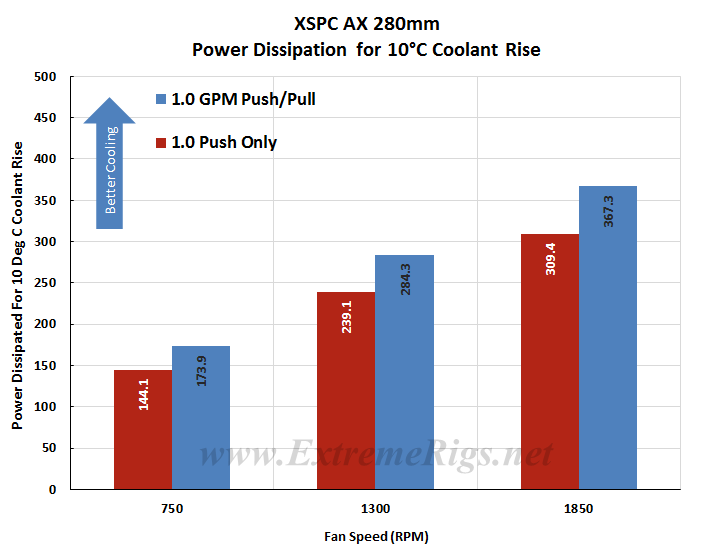 The average difference between Push Only and Push/Pull results at the same fan speed was ~16%, and ranged from ~17.1% at 750 rpm to 15.2% at 1850 rpm. This very close percentage difference shows that the AX280’s potential performance scales very evenly across different fan assemblies as the fan speeds are increased.
The average difference between Push Only and Push/Pull results at the same fan speed was ~16%, and ranged from ~17.1% at 750 rpm to 15.2% at 1850 rpm. This very close percentage difference shows that the AX280’s potential performance scales very evenly across different fan assemblies as the fan speeds are increased.
This same data can now be plotted on a chart so that an end user can interpolate their own fan speed. Note again that the extrapolation of the curve is much more sensitive to error than in between the tested range.
Now let’s analyze that data some more…







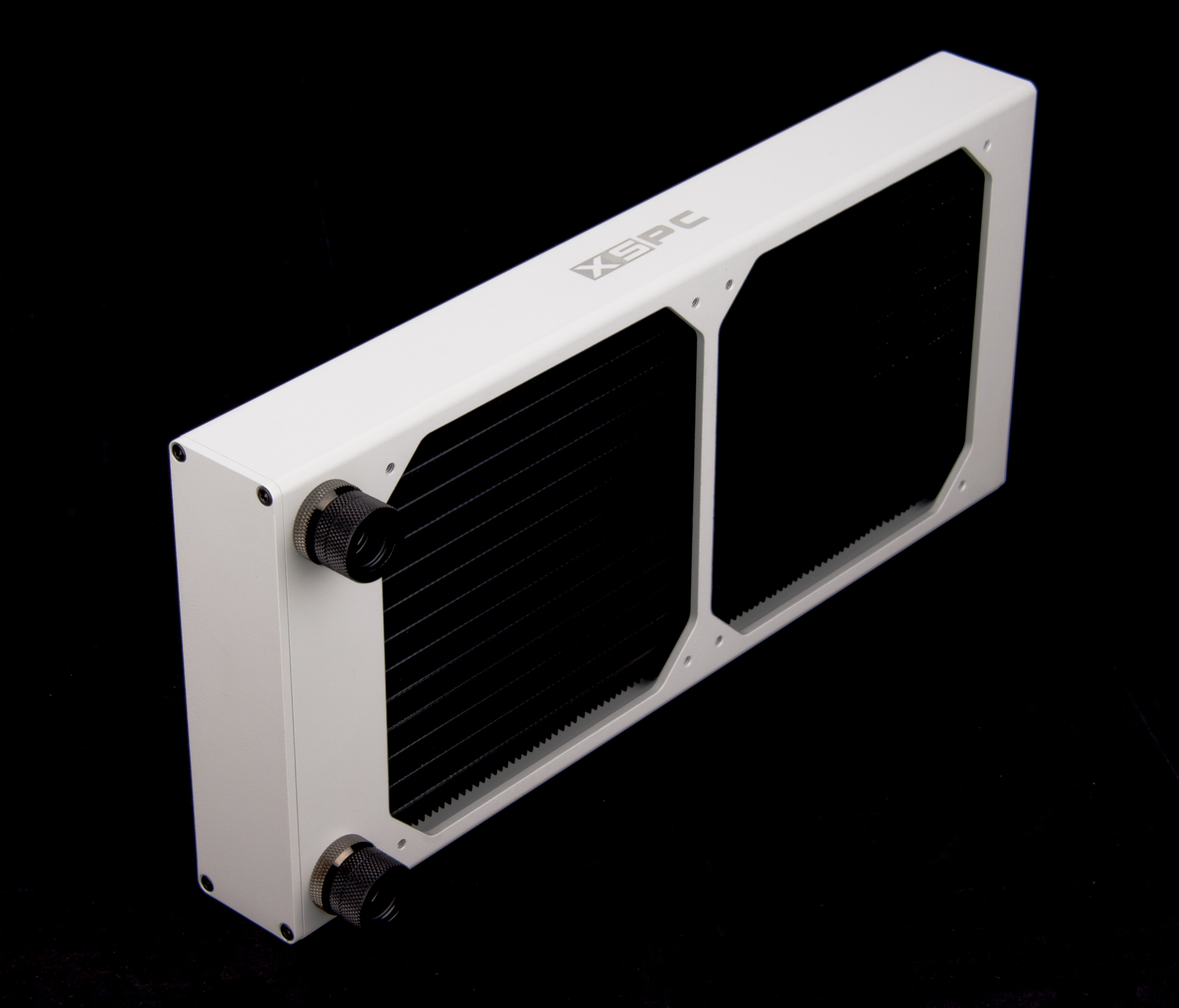
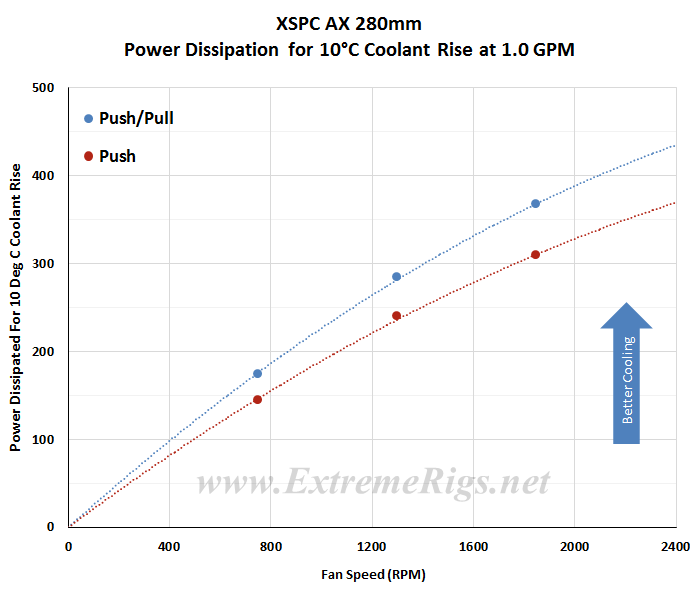



very grateful for the work you continue doing, can’t wait for the rest of the 280mm radiator review to pop up.
cheers
Thanks a ton for including all the data from your 280mm tests. I am just about to purchase a 280 radiator and have been going back and forth between the 280GTS, 280GTS X-Flow, and CE280…except using 140 and 360 tests as a basis for my decision. The data shown here has helped me tremendously. Thanks!
Glad to have been on assistance.
We included a few extra plots this time and it’s probably getting close to data saturation point for many readers.
Let us know which plots are the most and least useful to you guys.
We can try to streamline a little if the vast majority prefer less plots.
We don’t really like to use spoilers, as we consider the data either useful or not.
Really appreciate all the work you and Stren put in. I personally think the radiator efficiency space/radiator relative average performance graphs arent needed (but appreciated). People reading these reviews Im sure are capable of figuring this stuff out on their own based on the thermal tests you provide and just a little extra homework. 🙂
Hey fast_fate, you guys have become my go-to site for water cooling information. I wish I had found your site a couple of years back when I first started on this WC obsession, you would have saved me some ca$h! And while I realize the AX280 is the focus of this review, you have also made me very happy in showing just what a beast the Hardware Labs Nemesis 280GTX radiator is. I just picked this up a few months back in all-white form from Performance-PCs and am very happy to see that not only is it a class leading 280mm radiator, it actually outstrips the (non opti-flow setup) Nemesis 360GTX! And the best part is that it fits more cases than a 360mm radiator due to it’s reduced height.
Great review on the AX280. I very much like the AX series rads, and their case/shroud construction feels more robust and bomb-proof than the EK versions. But the one thing I do like about the CE and XE versions from EK is that they are “non-louvered” fins which means they will be less likely to become polluted by environmental dust. The AX series, much like the EX series being higher FPI and louvered would be a bit more sensitive to dust accumulation.
Great job and thanks!
Comments are closed.